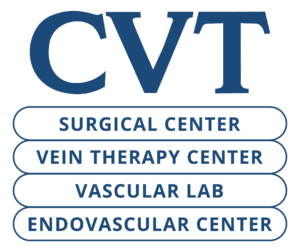Newton’s first law of motion is often stated as, “an object at rest tends to stay at rest while an object in motion tends to stay in motion.” This important concept can be used in more places than just your high school physics classroom, though – especially regarding your vascular health.
Peripheral Artery Disease (PAD) is a vascular condition affecting millions worldwide. It occurs when the arteries that supply blood to the extremities, typically the legs, become narrowed or blocked due to plaque buildup. This reduced blood flow can lead to pain, cramping and even tissue damage. While PAD can be challenging, exercising your body in motion is one of the most effective ways to manage it.
Comprehensive PAD Treatment in Baton Rouge
At CVT Surgical Center, we are dedicated to delivering cutting-edge care for vascular issues, with a special focus on PAD. Drawing on a legacy of leadership in vascular disorder management since 1957, our accomplished team of physicians, Drs. Mike Davis, Michael Conners, James McNeil, Gulrez Mahmood, and Matthew Abate are board-certified in the treatment of peripheral vascular disease and offer state-of-the-art treatments. This encompasses comprehensive support, from guiding patients through lifestyle adjustments to prescribing necessary medications and procedures. Your vascular health is in experienced hands with us.
Below are a few examples of why exercise is so important to combating PAD and keeping your body in healthy motion for years to come.
Improving Blood Flow: How Exercise Benefits PAD Patients
Exercise – from walking on a treadmill, using a stationary bike, practicing yoga and more – plays a crucial role in PAD management by improving blood flow to the affected limbs. When you engage in physical activity, your muscles require more oxygen and nutrients. Over time, this demand stimulates the development of collateral blood vessels, which can help bypass the narrowed or blocked arteries. This process, known as collateral circulation, can significantly enhance blood flow to the legs and reduce symptoms like pain and cramping.
Alleviating Pain and Discomfort from PAD with Regular Exercise
One of the most debilitating symptoms of PAD is intermittent claudication, characterized by leg pain or cramping during physical activity. Regular exercise helps individuals with PAD build endurance and tolerance to such discomfort.
By gradually increasing exercise intensity and duration, you can reduce the severity of claudication and extend your walking distance without pain.
Lowering Cardiovascular Risk through Physical Activity
PAD is not just a problem confined to the legs – it’s also linked to atherosclerosis, a systemic condition that affects arteries throughout the body. Exercise is an excellent way to address this broader issue. Engaging in regular physical activity can improve overall cardiovascular health, reduce cholesterol levels and lower blood pressure. By managing these risk factors, you can slow the progression of atherosclerosis and reduce the likelihood of other heart-related complications.
Enhancing Quality of Life: The Impact of Exercise on PAD
PAD can limit mobility and independence, which can significantly impact an individual’s quality of life. Exercise, especially supervised and structured programs, can help restore physical function and enhance overall well-being. Regular physical activity can boost your energy levels, improve mood, and help you maintain a more active lifestyle.
How Can Exercise Prevent Other Complications From PAD?
PAD can lead to severe complications such as ulcers, gangrene, and even limb amputation. When combined with other PAD management strategies like medication and lifestyle modifications, exercise can reduce the risk of these complications. By promoting better circulation and wound healing, exercise is essential in preventing the most serious consequences of PAD.
Don’t let PAD hold you back – start incorporating regular exercise into your routine today to improve your vascular health and overall well-being.

